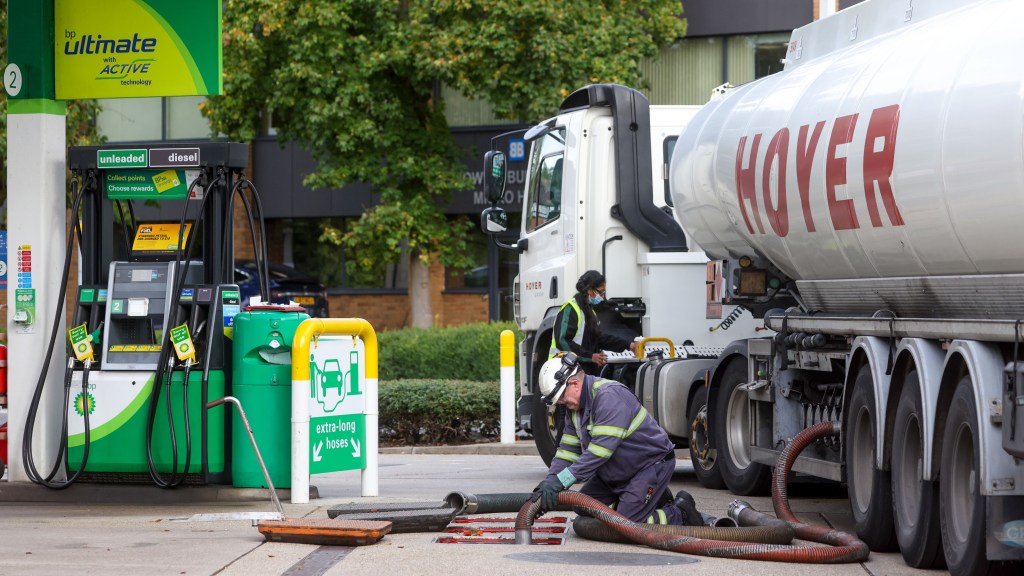Oil Prices Dip Below $60 for the First Time Since the Pandemic
On Wednesday, oil prices dropped below $60 per barrel for the first time in over four years, driven by concerns that escalating trade wars could negatively impact global demand. However, the prices later recovered following President Trump’s shift in trade policy.
Brent crude, the benchmark for international oil, fell as much as 5.2% at one point to $58.46 a barrel, marking its lowest point since February 2021 and nearly a 20% decrease from the time Trump enacted significant global tariffs on April 2.
Following the President’s latest policy adjustment, Brent crude prices bounced back, trading 3.5% higher at $64.82. West Texas Intermediate, the U.S. benchmark, which had slid by as much as 5.3% to $55.10 a barrel, recovered to $62, gaining 4% on the day.

The decline in oil prices was exacerbated by a surprising decision from the OPEC+ alliance, which includes major oil-producing nations, to increase output more than anticipated despite the tariffs.
Eight member nations, including Saudi Arabia, Russia, and Iraq, decided to raise their combined output by 411,000 barrels per day starting in May, far exceeding expectations of a 135,000 barrel-per-day increase.
Goldman Sachs analysts, responding to these developments, downgraded their oil price forecasts for the third time on Tuesday, now expecting Brent crude to average $58 per barrel by the end of this year and $51 by the end of next year.
Similarly, Morgan Stanley revised their quarterly forecasts for Brent crude, lowering them by $5 per barrel to $65 for the second quarter, and to $62.50 for both the third and fourth quarters of the year.
Experts pointed out that the “twin headwinds of higher-than-expected trade tariffs and more rapid OPEC+ production increases” are likely to suppress oil prices in the forthcoming months. They also reduced their demand forecast for the latter half of the year by 500,000 barrels per day.
Francisco Blanch, who heads commodities research at Bank of America, suggested that Brent crude could drop to $50 a barrel in a worst-case scenario; however, deteriorating geopolitical relations and possible tariff reductions could help mitigate pressure on oil prices.
Earlier in the week, oil prices showed signs of a rebound on speculation of a possible pause on tariffs, leading to a 3% increase in Brent crude to $67 per barrel, but those gains diminished after the rumors were denied.
This decline in oil prices has sparked speculation about potential reductions in consumer fuel prices.
Simon Williams, head of policy at the RAC, noted that with oil prices at their lowest since the pandemic era in April 2021, wholesale fuel costs are “falling rapidly,” which could compel retailers to lower prices at the pump. “We anticipate that the first price cuts will occur later this week as major retailers replenish their stock,” he said.
Since the tariffs were enacted on April 2, the average pump price for petrol has barely shifted, recorded at 135.6p per litre compared to 135.4p, while diesel prices have remained steady at 142.3p, according to AA data.
Luke Bosdet, an AA spokesperson regarding fuel prices, mentioned that there might be a lag before lower oil prices translate into reductions at the pump, particularly as the start of the American summer driving season typically drives up gasoline demand and prices.
“If I anticipate a significant decrease in pump prices, it would likely occur later in the summer when reduced travel by U.S. holidaymakers impacts gasoline demand and leads to lower commodity values,” said Bosdet.
Additionally, rising employer national insurance contributions and the living wage might deter retailers from fully passing on the benefits of lower oil prices to consumers.




Post Comment